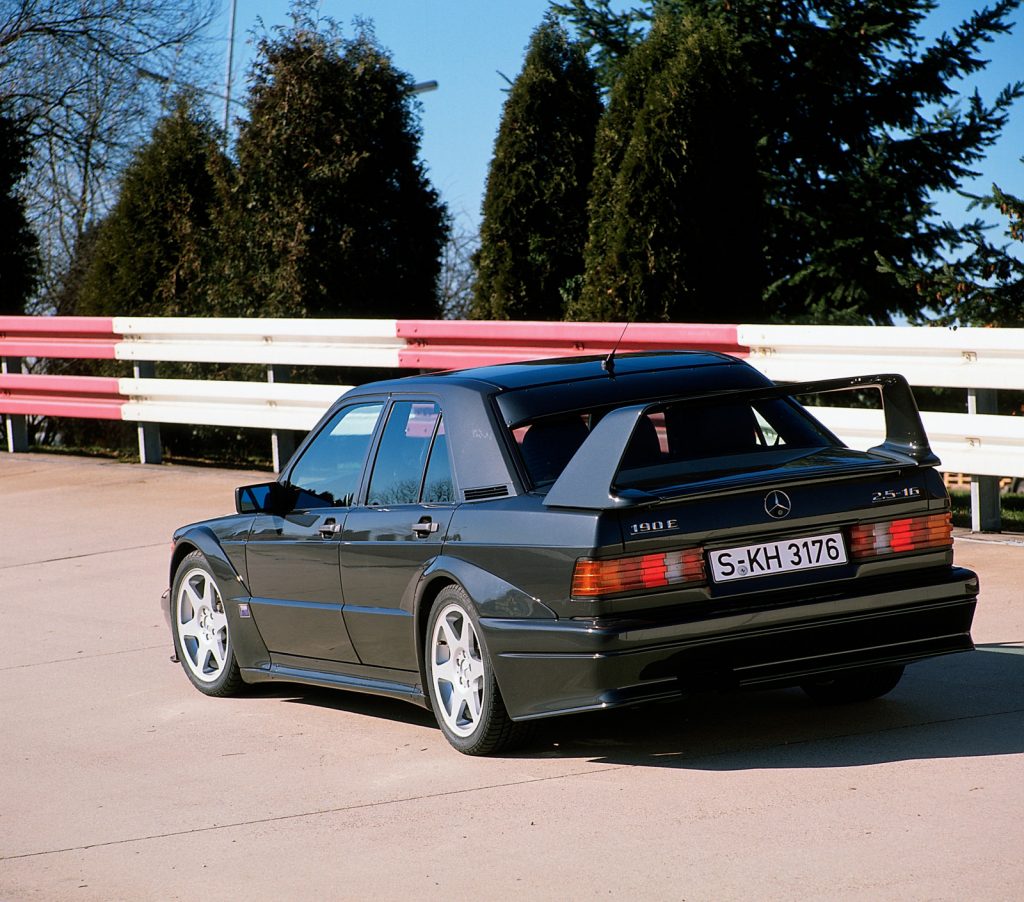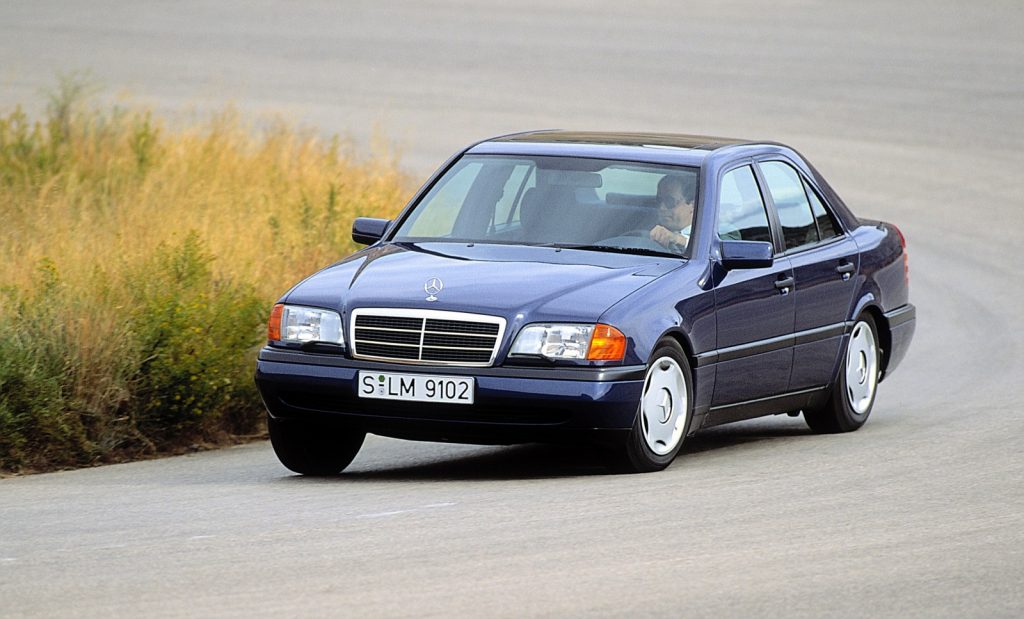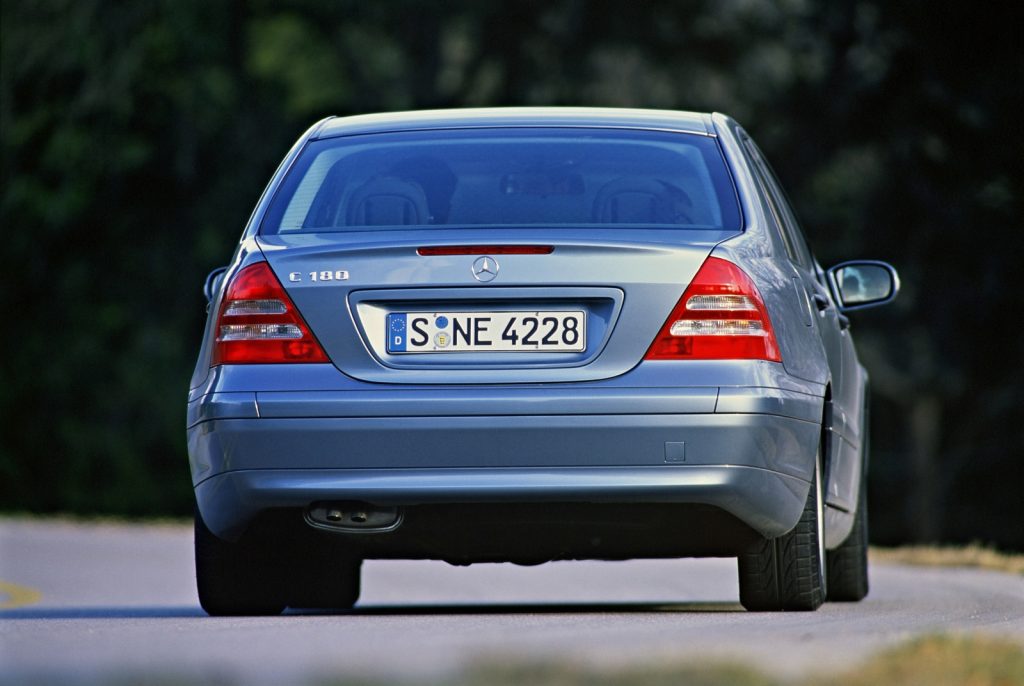The190E brought compact to the Merc brand
Compact premium sedans were quite the buzz in the early 1980s, borne out by the appetite for something compact, yet with all the accoutrements and creature comforts found in much bigger models.
Of course, the biggest drive was for manufacturers to net a wider audience by offering a slightly cheaper entry point into a range but the 1979 oil crisis also pushed most carmakers to look into more frugal engined cars. Mercedes-Benz was intent on making the transition and, in 1982 at the Paris Motor Show, the Stuttgart outfit unveiled the W201, which was badged the 190E when it made its production debut later that year.
The model received a warm reception and was one of the first in its class to introduce a 5-link rear suspension – subsequently used in the C and E-Class models – ABS brakes and pre-tensioned seat belts among others. It was quickly dubbed “Baby Benz”, as it was the smallest Mercedes you could buy, but this changed with the introduction of the first-generation A-Class, a story for another day.
Back to the Bruno Sacco-designed 190E, though. It is safe to say the model was chalking up popularity and quickly saw a performance variant, the 2.3-16V, break cover at the Frankfurt Motor Show. Its desirability was elevated, particularly with the 2.5-16V Cosworth Racing Homologation special EVO I that was revealed at the 1989 Geneva Motor Show, while the EVO II was shown a year later at the same show. Its job was to race in the DTM (German Touring Car Championship), which it dominated.
 The 1990 190E 2.5-16 EVO II was designed to race. Photos: Daimler AG and Mercedes-Benz AG
The 1990 190E 2.5-16 EVO II was designed to race. Photos: Daimler AG and Mercedes-Benz AG
It’s been 32 years since that model came out, yet its desirability has gone northwards over that period. Only 500 units of the EVO I were produced, while the EVO II’s production was capped at 502 units, making the model as rare as hen’s teeth.
In 1993, Mercedes-Benz introduced the W202 and, for the first time, adopted the C-Class name that continues to this day. The model was also assembled at the firm’s East London, Eastern Cape, plant.
 The C-Class saloon of the 202 model series was produced from 1993 to 2000. Photos: Daimler AG and Mercedes-Benz AG
The C-Class saloon of the 202 model series was produced from 1993 to 2000. Photos: Daimler AG and Mercedes-Benz AG
While many of its design cues were similar to the outgoing 190E, its appearance was less squared off, more rounded. It brought with it many derivatives including both petrol and diesel and also a sporty C230 Kompressor variant. More significantly, however, was the introduction of the C36 AMG, the first jointly developed vehicle between Mercedes-Benz and AMG and essentially the beginning of the C-Class-based AMG derivative.
At the turn of the millennium, the third generation (W203) C-Class was introduced and with it a similar spread of petrol and diesel as its predecessor, with some derivatives also available with the optional manual transmission. Also, for the first time, the C-Class was also available in liftback (hatch) bodyform over and above the sedan and stationwagon (“Estate” in Merc parlance).
 Around the Benz: The latest W206
Around the Benz: The latest W206
As an owner of a 2005 C180 Kompressor, I can attest to their reliability and steady build quality, not to mention thriftiness at the pumps. There were also some tasty models that I used to hanker after, such as the C320 AMG, then the C32 AMG and culminating in the C55 AMG with its burly 5.4-litre V8 power plant.
The year 2007 ushered in the W204 model, which for the most part carried over engines from the W203, before switching to turbo-charged petrol engines from the superchargers (Kompressor). The model was offered in sedan, wagon and fastback, dubbed CLC. Much later in the production cycle, the coupe body style was made available and duly replaced the CLC.
At the top of the model range sat the C63 AMG with its 6.2-litre V8 lump, initially in sedan and later coupe. A tyre shredder of note, the model is still endearing to this day as it was the last normally-aspirated V8 C-Class. We are fortunate to have reviewed all the models in the range, including the much-vaunted C63 AMG Black Series, which was an unyielding track car with one of the stiffest suspensions in its class. A one-trick pony for the most part, it was the most focused C63 AMG of that era.
In 2014, the fourth-generation W205 of the C-Class was introduced and for the first time included convertible body forms to squarely compete with its Audi A4 and BMW 3 Series counterparts.
The range also adopted a more minimalist, yet high-quality, feel, which I’m of the view was lost in the previous W204 model derivative when compared to the W203 that came before it.
A good mix of engines, in both petrol and diesel, were offered in four-cylinder derivatives, while the AMG C43 model was introduced to sit just below the full-fat AMG C63 high-performance version. In our view, it truly managed to blend tactility and sophistication, but there was still something missing – driving dynamics. Yes, the AMG models in their run-out phase were well sorted, but the W205 C-Class wasn’t a dynamically well-polished product straight out of the box across the range.
Thankfully that anomaly has been addressed with the latest W206 model and we spent a fair amount of time in the saddle of the entry-point C200 petrol to draw the conclusion that it is now, indeed, a driver’s car.
What about the engine? Is the 1.5-litre turbo petrol sufficient to pull this premium sedan with conviction? Well, I’m happy to report that it does. Thanks to a 48-volt starter generator in the gearbox, there’s instantaneous thrust (15kW and 200Nm) available from the get-go. This is then augmented by the petrol motor making 150kW and 300Nm and driving the rear wheels through a 9-speed automatic gearbox.
The engine makes a strong case for itself in the down-sizing exercise and, for daily trudges, you really do not need anything larger. Of course, there is the C220d, if even better economy is what you are after. I can attest to it being extremely thrifty, registering as low as 4.7-litres per 100km, without trying hard. You can easily achieve a 1 000km range from the 66-litre tank, which is an absolute boon during these times of skyrocketing fuel prices.
The dynamic handling stakes is where the new C-Class truly shines. It feels ever so confident to be thrown into corners at verve and tracks true to the chosen line. Our test car was also kitted out with rear-wheel steering, making it even more dynamic at speed, while easy to manoeuvre in tight spaces, like shopping mall parking bays. As a package, I reckon the C-Class is closer to the Alfa Romeo Giulia and makes a great base for the AMG models that will follow shortly.
While the popularity of SUVs continues to grow unabated, the humble three-box sedan remains under threat. However, the premium sedan seems to be holding up a tad better than none premium brands. Yes, the GLC might offer far more versatility, but in markets like China and the US, the sedan continues to hold its own, and we can thank those big markets that SA continues to build the C-Class locally.
Pricing, admittedly, has crept up, with a well-specced C-Class now easily over the R1-million mark. Yes, that is a huge capital outlay for a mid-sized sedan but currency fluctuation has seen car prices going through the roof in recent times. However, that doesn’t take away from the fact that the latest Mercedes-Benz C-Class is an absolute class act.